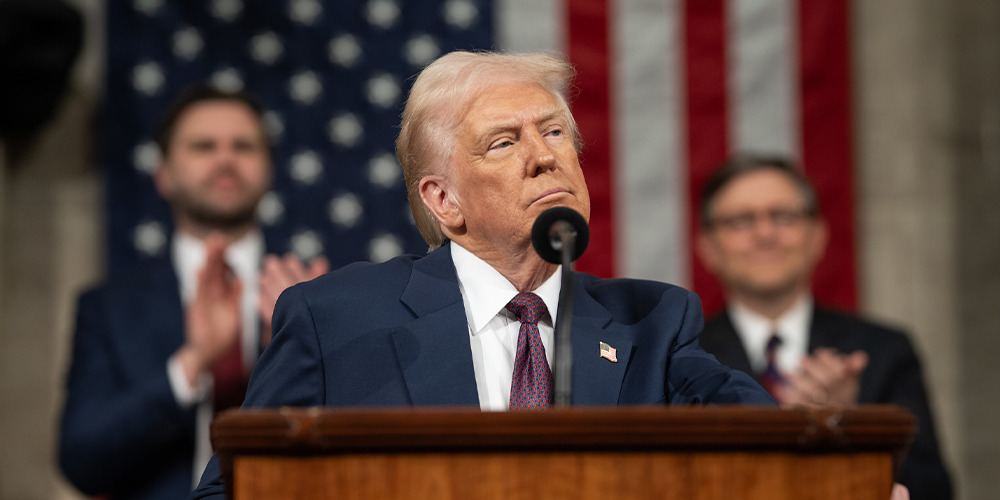President Donald Trump’s renewed tariff strategy is sending shockwaves through the U.S. and global economy. While his administration insists the sweeping trade measures are aimed at restoring balance and fairness to international commerce, economists and market analysts warn that the economic fallout may be far more severe than intended.
A Return to Aggressive Tariffs
Earlier this week, President Trump announced the implementation of a baseline 10% tariff on all imports, with higher rates on targeted goods, especially from China. Some Chinese imports now face combined tariffs as high as 54%. The move marks a dramatic escalation in the administration’s ongoing push for “reciprocal trade” — a doctrine that prioritizes equal tariffs between trading partners.
“If they tax us, we tax them the same or more,” Trump stated during a press briefing at the White House. “We will no longer allow other nations to exploit American workers and manufacturers.”
(Source: The Australian)
Economic Fallout Already Underway
Despite the administration’s assertions, the economic consequences of these tariffs are already being felt:
- Consumer Costs: According to economic analysis reported by The New York Post, the average American household could face an additional $3,800 per year in costs due to increased prices on imported goods.
- Inflation and GDP Slowdown: Analysts predict inflation could spike by up to 2.3%, and GDP growth could decline by as much as 0.8%, potentially pushing the country toward stagflation — a toxic mix of inflation and economic stagnation.
- Market Reaction: The stock market tumbled in response to the announcement. The Dow Jones Industrial Average dropped 1,679 points in a single day — its worst since 2020 — wiping out $3.1 trillion in value.
“Tariffs act like a tax on consumers and businesses,” explained Mark Zandi, Chief Economist at Moody’s Analytics. “They drive up costs, reduce competitiveness, and invite retaliation.”
(Source: NY Post)
Historical Parallels: A Warning From the 1930s

Economists have drawn comparisons between Trump’s strategy and the Smoot-Hawley Tariff Act of 1930, which many believe worsened the Great Depression by strangling global trade. That legislation also raised tariffs broadly across the board in an attempt to protect American industries, but instead triggered a wave of retaliatory tariffs and a collapse in international commerce.
A 2025 editorial in the San Francisco Chronicle warns:
History teaches us that protectionist overreach can transform a recession into a prolonged depression.”
(Source: SF Chronicle)
A Bipartisan Concern in Washington
The backlash on Capitol Hill has been swift and bipartisan. Lawmakers are pushing back against Trump’s executive overreach on trade. A proposed bill in the U.S. Senate would require congressional approval before any broad-based tariffs can be enacted — a move designed to rein in what many see as economically dangerous unilateral decisions.
Tariffs of this scale should not be the whim of one person,” said Sen. Amy Klobuchar (D-MN). “Congress must have a say when the entire economy is at risk.
(Source: TIME)
The Global Response
Several key trading partners, including the European Union, Canada, and China, are considering or have already initiated retaliatory tariffs on U.S. exports such as agricultural products, cars, and technology components. This escalation could spiral into a full-fledged trade war, reducing export opportunities for American businesses.
The Office of the U.S. Trade Representative (ustr.gov) has acknowledged that retaliatory measures are expected but insists they will be met “dollar-for-dollar.”
What This Means for You
For everyday Americans, this means:
- Higher prices at the grocery store and on imported electronics and vehicles.
- Potential job losses in industries heavily reliant on global supply chains.
- Reduced investment in U.S. manufacturing due to market uncertainty.
Those interested in understanding the broader economic impact can consult data and forecasts published by the U.S. Bureau of Economic Analysis (BEA) and Federal Reserve.
The Political Strategy Behind the Economics

Some analysts believe Trump’s tariff push is more political than economic. With the 2026 midterms approaching, the administration appears keen to appeal to Rust Belt voters who have historically supported protectionist policies.
“Trump’s base sees tariffs as a way to reclaim industrial glory,” said political analyst Jennifer Rubin. “It’s a messaging strategy — even if the economic fallout hurts the very voters it aims to energize.”
Final Thoughts
While the long-term effects of President Trump’s tariff expansion remain to be fully realized, the immediate consequences are clear: increased consumer costs, market instability, and growing concern among lawmakers and economists.
Whether these tariffs will achieve their intended goal of strengthening American industry — or instead deepen economic divides — is a question that only time will answer.
For updates on tariff policies and trade developments, visit the U.S. Department of Commerce and International Trade Administration.

Vikas is a seasoned finance writer with a keen eye for unraveling complex global financial systems. From government benefits to energy rebates and recruitment trends, he empowers readers with actionable insights and clarity. When he’s not crafting impactful articles, you can find him sharing her expertise on Social Media. You can connect with him via email at [email protected].









